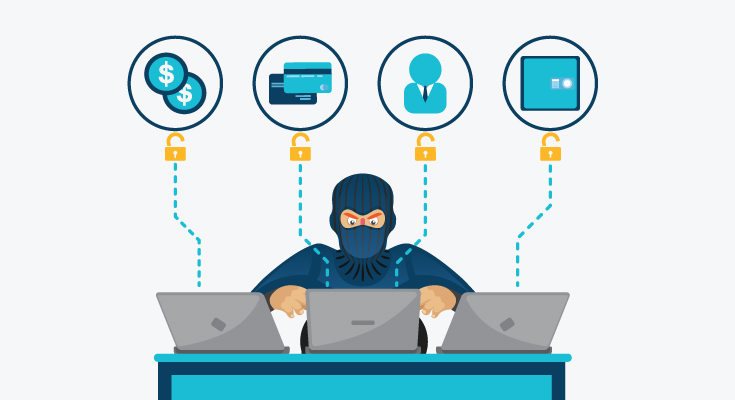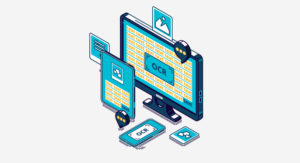Identity Vetting – What is it, How it Works?

In today’s digital world, where online transactions, remote work, and digital services are rapidly increasing, ensuring that individuals are who they claim to be is more critical than ever.
As a result, identity vetting has become a cornerstone for organizations seeking to protect sensitive information, maintain trust, and prevent fraud.
In this blog, we’ll delve into what identity vetting entails, how it works, its importance, and the various methods used to verify identities. Additionally, we’ll discuss how identity vetting plays a key role in combating fraud.
What is Identity Vetting?
Identity vetting is verifying that a person is who they claim to be. It ensures that individuals accessing a service, applying for a job, or participating in a transaction are legitimate and authorized.
This process often involves confirming details such as personal information, government-issued identification, and other forms of verification that help organizations validate identities.
With the rise of digital services, identity vetting has become integral to online security. Many businesses use identity verification solutions to ensure their users are legitimate, reducing the risk of fraud or unauthorized access. Whether applying for a loan, opening a bank account, or registering for an online service, identity vetting helps protect both individuals and organizations.
How does it work?
Identity vetting typically follows a structured process that involves verifying multiple pieces of information. Here’s how the process generally works:
- Submission of Documents: The user is required to provide personal information and submit supporting documents like a driver’s license, passport, or other government-issued ID.
- Identity Verification Solution: The business or organization utilizes an identity verification solution to analyze and authenticate the provided documents. These solutions often use machine learning, facial recognition, and AI to cross-check the authenticity of documents and ensure they haven’t been tampered with.
- Cross-Reference with Databases: The information provided is cross-checked against external databases (such as credit bureaus or governmental registries) to validate the individual’s identity.
- Biometric Verification: In some cases, biometric data like fingerprints or facial scans may be required to match the provided identity documents.
- Confirmation: Once the identity is vetted, the individual is either approved or flagged for further investigation if discrepancies arise.
For example, during online documents verification, individuals may be asked to upload their ID, take a selfie, or provide other forms of identification to prove their identity.
Importance of ID Vetting
The importance of identity vetting cannot be overstated, especially in an era where identity theft and online fraud are rampant. Here’s why it’s crucial:
- Prevents Fraud: Identity vetting ensures that malicious actors cannot assume someone else’s identity to commit fraud or gain unauthorized access to sensitive information.
- Builds Trust: Customers and users are more likely to trust organizations that employ stringent identity verification measures, as they demonstrate a commitment to security and privacy.
- Compliance with Regulations: Many industries, such as banking, healthcare, and finance, are subject to regulations (like KYC or AML laws) that require organizations to verify identities before engaging in certain transactions or services.
- Mitigates Risk: For businesses, identity vetting reduces the risk of onboarding fraudulent users, which can lead to financial losses, reputational damage, and legal issues.
By integrating identity vetting into their processes, companies can ensure that they are compliant with industry regulations while minimizing the risk of fraud.
Different Methods of Identity Vetting
Several methods are used to verify identities, each offering varying levels of security. Some of the most common identity vetting methods include:
- Document Verification
This is the traditional method where individuals submit identity documents, such as passports, driver’s licenses, or national IDs, for verification. Modern identity verification solutions often utilize online document verification systems that automatically authenticate the documents and ensure they are legitimate.
- Biometric Verification
Biometric verification uses unique physical characteristics, such as facial recognition, fingerprints, or voice recognition, to confirm an individual’s identity. This method is increasingly popular due to its accuracy and security.
In this method, individuals are asked to answer specific personal questions (e.g., “What is your mother’s maiden name?”) to verify their identity. However, this method is less secure since it relies on information that can sometimes be obtained by unauthorized individuals to-factor authentication (2FA)
Two-factor authentication is one of the stronger methods when it comes to ID vetting. The best part is that it’s not at all complicated. This method requires individuals to verify their identity using two separate factors: a password and a one-time code sent to their phone or email. Once the user tries to log in, they will be asked to input a 4 or 6-digit code that’s sent to the user’s phone or email address.
- Social Verification
Some platforms use social media profiles or other online data to help verify the identity of users. While not as secure as biometric or document verification, it can be a supplemental layer of identity vetting.
How to Fight Fraud with ID Vetting?
Identity vetting plays a crucial role in combating fraud, and companies are leveraging sophisticated tools and techniques to strengthen their defenses. Here’s how ID vetting helps prevent fraud:
- Detecting Fake Documents
Advanced identity verification solutions use machine learning and AI to spot fraudulent documents. These solutions can identify discrepancies like altered photos, incorrect fonts, or tampered data fields, which would otherwise be difficult to detect manually.
- Stopping Identity Theft
By utilizing online document verification and biometric tools, businesses can ensure that the person presenting an ID is the same individual in the document. This step significantly reduces the risk of someone using a stolen or counterfeit identity.
- Flagging High-Risk Individuals
Identity vetting allows businesses to flag high-risk individuals by comparing their information with global watchlists or other databases. This is particularly useful in preventing money laundering or other criminal activities.
- Minimizing Synthetic Fraud
Synthetic fraud, where fraudsters create a fake identity by combining real and false information, is a growing problem. Identity vetting solutions cross-check multiple data points to detect synthetic identities before fraud occurs.
By employing a comprehensive identity vetting strategy, businesses can drastically reduce their exposure to fraud.
Conclusion
Identity vetting is an essential process for any organization that handles sensitive data or conducts online transactions. From preventing fraud to ensuring regulatory compliance, identity vetting is a key pillar of digital security. Whether through online document verification, biometric checks, or two-factor authentication, businesses must remain vigilant and employ robust identity vetting techniques to protect themselves and their users. As technology evolves, so too must our methods for verifying identities, ensuring a secure and trustworthy digital landscape.
FAQs
What is identity vetting?
Identity vetting is the process of verifying that an individual is who they claim to be, typically through document verification, biometric checks, and other forms of authentication.
How does identity verification work?
Identity verification involves submitting documents or information, which is then cross-checked against databases or authenticated through technology like facial recognition or AI-based analysis.
What are some common identity vetting methods?
Common methods include document verification, biometric checks, knowledge-based authentication, and two-factor authentication.
Why is identity vetting important?
It prevents fraud, builds trust, ensures compliance with regulations, and reduces risk for businesses and individuals alike.
How does identity vetting help prevent fraud?
By verifying documents, cross-referencing with databases, and using biometric tools, identity vetting helps stop fraudsters from using stolen or fake identities.












